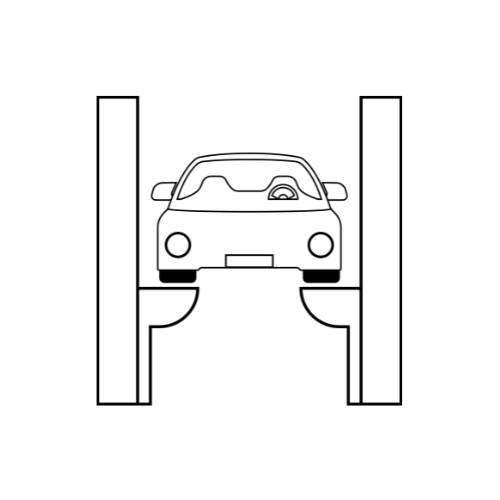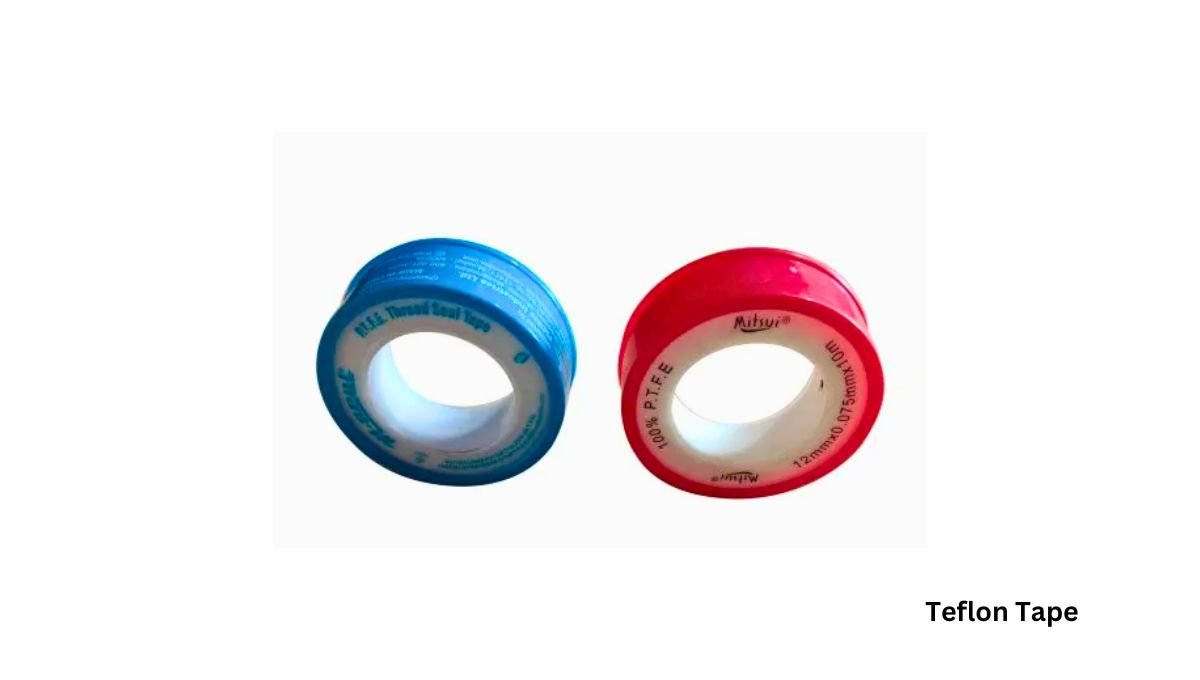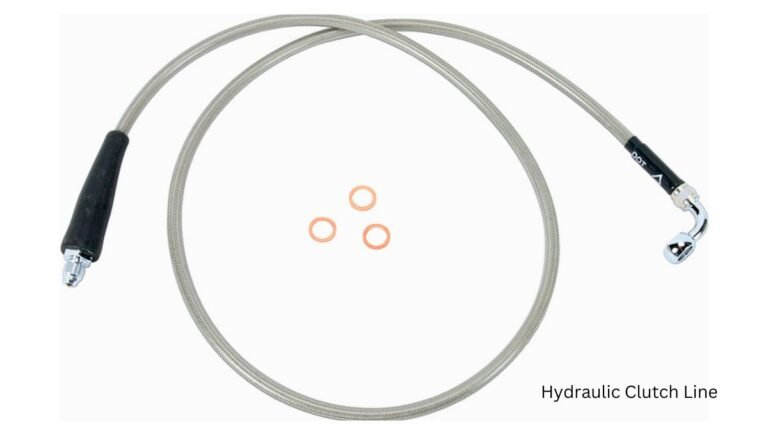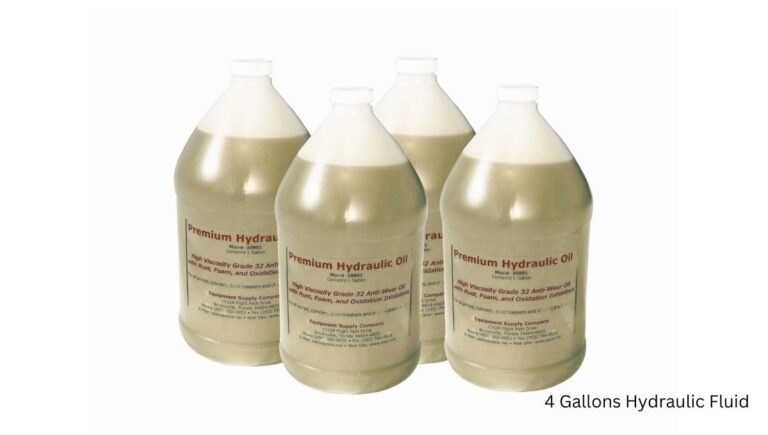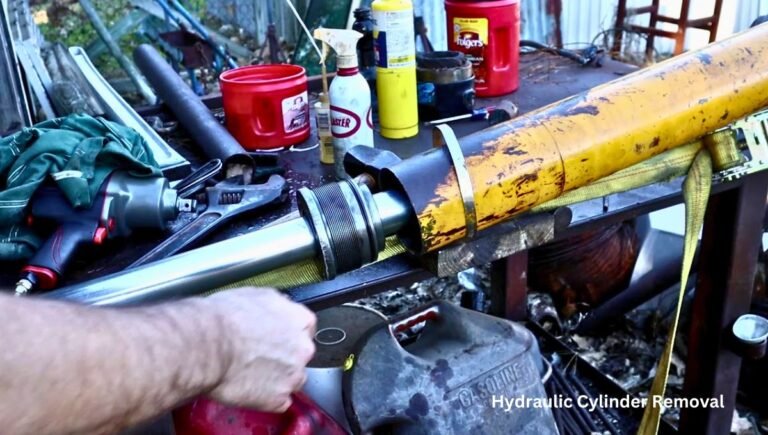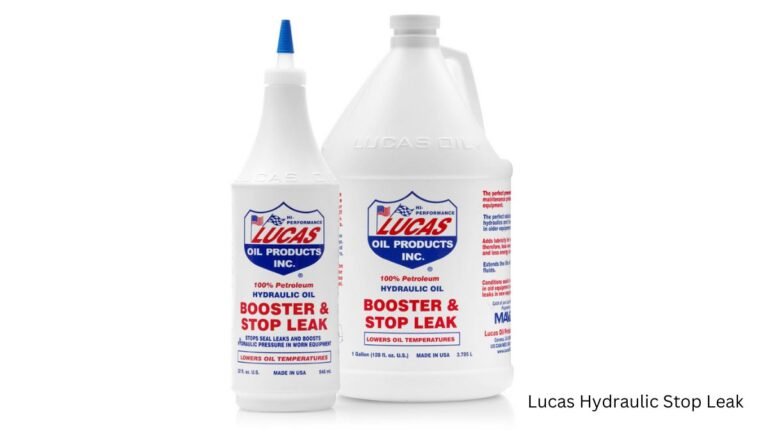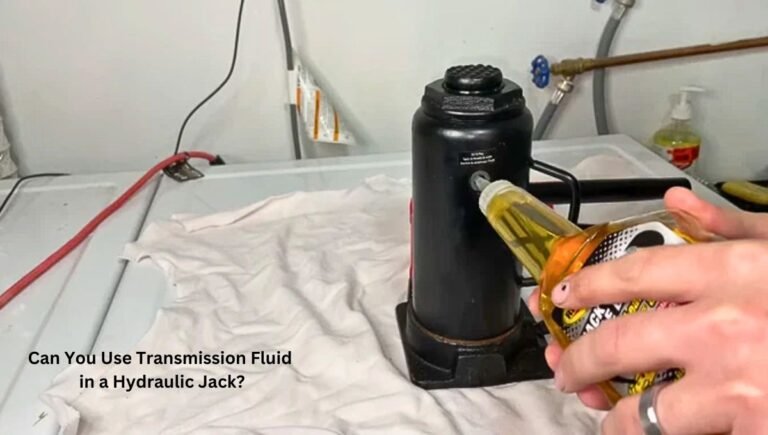Can You Use Teflon Tape on Hydraulic Fittings? The Truth!
No, you should not use Teflon tape on hydraulic fittings. It can cause contamination and leaks.
Hydraulic systems require precision and cleanliness to function correctly. Using Teflon tape on hydraulic fittings is not recommended as it can shred and contaminate the system. Contaminants can block or damage components, leading to inefficiency or failure. Instead, use proper hydraulic sealants designed for high-pressure environments.
These sealants ensure a secure fit without the risk of contamination. Always follow manufacturer guidelines when selecting and applying sealants to maintain the integrity and performance of your hydraulic system. Proper maintenance and correct sealing methods are crucial for the longevity and reliability of hydraulic machinery.
The Role Of Teflon Tape In Sealing
Teflon tape, also known as PTFE tape, is a popular sealing material. It’s often used in plumbing and other applications for its excellent sealing properties. But can you use Teflon tape on hydraulic fittings? Let’s explore its role in sealing hydraulic systems.
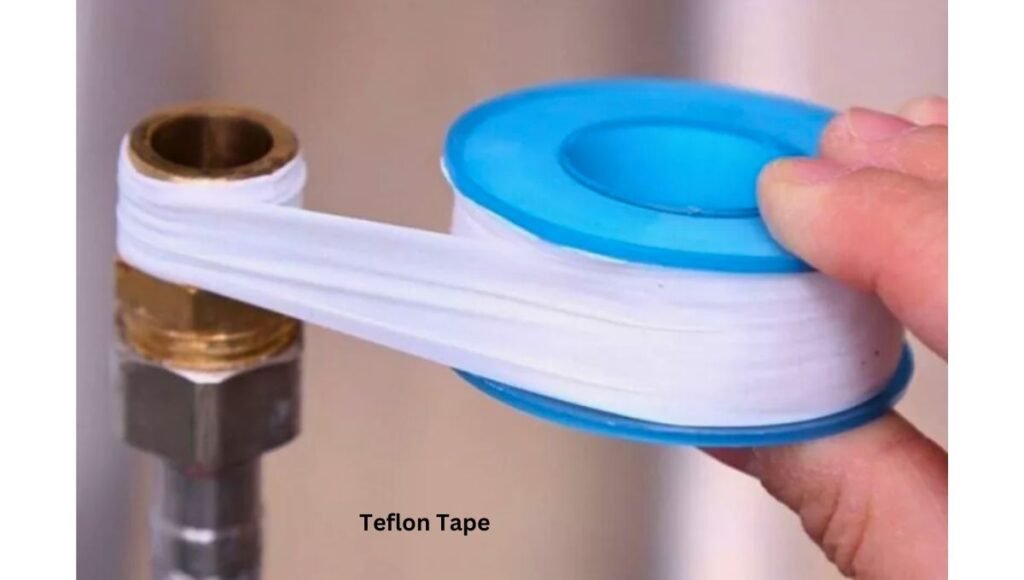
Sealing Mechanisms
Hydraulic systems rely on effective sealing to prevent leaks. These systems operate under high pressure. Thus, a reliable seal is crucial for maintaining efficiency and safety.
There are various sealing mechanisms used in hydraulic fittings:
- O-rings
- Metal-to-metal seals
- Thread sealants
Each of these mechanisms serves a specific purpose. They ensure that the hydraulic fluid stays contained within the system.
Teflon Tape Properties
Teflon tape has several properties that make it suitable for sealing:
- High-temperature resistance
- Chemical inertness
- Low friction
These properties help Teflon tape create a tight seal. It prevents leaks effectively in many scenarios.
However, using Teflon tape on hydraulic fittings is a topic of debate. The tape can sometimes shred and contaminate the hydraulic fluid. This can lead to system malfunctions or damage.
It’s essential to understand the specific requirements of your hydraulic system. Consult the manufacturer’s guidelines before using Teflon tape.
| Sealing Mechanism | Use Case |
|---|---|
| O-rings | Static and dynamic seals |
| Metal-to-metal seals | High-pressure applications |
| Thread sealants | Threaded connections |
Hydraulic Fittings Basics
Hydraulic systems are essential in many machines. They move liquid through sealed systems. Hydraulic fittings play a key role here. They connect hoses, tubes, and pipes.
Types Of Hydraulic Fittings
There are various types of hydraulic fittings. Here are some common ones:
- Threaded Fittings: These have threads for a tight seal.
- Flanged Fittings: They use a flange to connect two parts.
- Compression Fittings: These use pressure to create a seal.
- Push-to-Connect Fittings: Easy to use, no tools needed.
Materials And Design
Hydraulic fittings come in different materials. Common materials include:
- Steel: Strong and durable, often used in heavy-duty systems.
- Stainless Steel: Resists rust, ideal for harsh environments.
- Brass: Corrosion-resistant and easy to shape.
- Plastic: Lightweight but less durable.
The design of hydraulic fittings also matters. Key design features include:
- Sealing Mechanism: How the fitting prevents leaks.
- Connection Type: Threads, flanges, or other methods.
- Shape: Straight, elbow, or tee shapes.
| Material | Strength | Usage |
|---|---|---|
| Steel | High | Heavy-duty systems |
| Stainless Steel | Medium-High | Harsh environments |
| Brass | Medium | General use |
| Plastic | Low | Light-duty systems |
Choosing the right material and design is crucial. It ensures the system works well and lasts long.
Teflon Tape Vs. Hydraulic Applications
Many people wonder if they can use Teflon tape on hydraulic fittings. Teflon tape, often used for plumbing, seems versatile. But hydraulic systems have unique requirements. Let’s explore how Teflon tape fits into hydraulic applications.
Compatibility Concerns
Teflon tape is common in household plumbing. But its use in hydraulic systems is debatable. Hydraulic systems often use high pressure. Teflon tape may not withstand these conditions. It can break down and cause leaks.
Hydraulic systems also use special fluids. These fluids may react with Teflon tape. This reaction can cause tape degradation. In some cases, small pieces of Teflon tape may clog the system. This could lead to significant damage or failure.
Pressure And Temperature Factors
Hydraulic systems operate under extreme pressure. Teflon tape may not handle this high pressure. It can stretch or tear, leading to leaks. The system’s performance may degrade over time.
Temperature variations also affect Teflon tape. Hydraulic systems can get very hot. Teflon tape may melt or lose its sealing properties. This could compromise the entire system.
| Factor | Teflon Tape | Hydraulic Systems |
|---|---|---|
| Pressure | Low to Medium | High |
| Temperature | Moderate | High |
| Compatibility | General Plumbing | Special Fluids |
Using Teflon tape in hydraulic systems is risky. Special seals designed for hydraulic use are better. These seals withstand high pressure and temperature. They are also compatible with hydraulic fluids.
- Hydraulic systems need specific seals.
- Teflon tape may cause leaks.
- Special seals handle high pressure.
- Temperature variations affect Teflon tape.
- Proper seals prevent system damage.
Pros And Cons Of Using Teflon Tape
Using Teflon tape on hydraulic fittings has both pros and cons. Understanding these can help you make an informed decision. Teflon tape, also known as PTFE tape, is a common material used for sealing threads. It is important to evaluate its benefits and potential drawbacks.
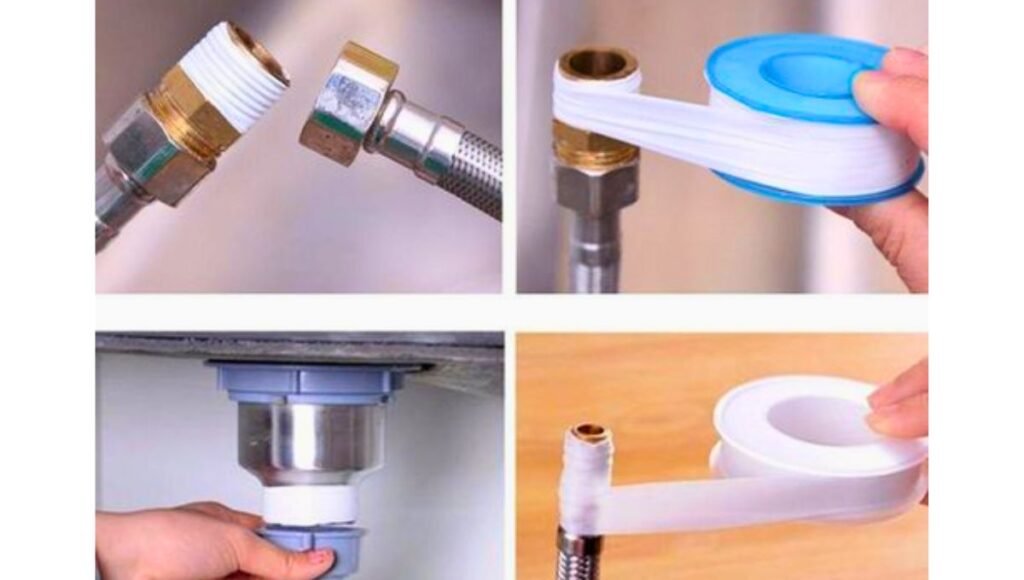
Advantages In Sealing
Teflon tape provides excellent sealing properties. This helps prevent leaks. Here are some key advantages:
- Ease of Use: Teflon tape is simple to apply. It requires no special tools.
- Cost-Effective: Teflon tape is inexpensive. This makes it a budget-friendly option.
- Corrosion Resistance: The tape resists chemical reactions. This reduces the risk of corrosion.
- Temperature Range: Teflon tape can withstand high temperatures. This makes it versatile.
Potential Drawbacks
Despite its benefits, Teflon tape has some drawbacks. These should be considered:
- Not Suitable for High-Pressure Systems: Hydraulic systems often operate at high pressure. Teflon tape may not provide a reliable seal in such conditions.
- Contamination Risk: Pieces of tape can break off. This can contaminate the hydraulic fluid.
- Incorrect Application: Applying the tape incorrectly can cause issues. Overlapping or insufficient tape can lead to leaks.
- Compatibility Issues: Not all fittings are compatible with Teflon tape. It is essential to check the manufacturer’s recommendations.
Here is a simple comparison table to summarize:
| Advantages | Drawbacks |
|---|---|
| Easy to use | Not suitable for high pressure |
| Cost-effective | Risk of contamination |
| Corrosion resistant | Incorrect application can cause leaks |
| Wide temperature range | Compatibility issues |
Alternatives To Teflon Tape For Hydraulics
Using Teflon tape on hydraulic fittings can be risky. It may not provide the desired seal and can cause system failures. Here are some alternatives that work better for hydraulic systems.
Pipe Dope And Thread Sealants
Pipe dope and thread sealants are popular for hydraulic fittings. They create a strong, reliable seal.
Here is a table comparing the benefits:
| Pipe Dope | Thread Sealants |
|---|---|
| Easy to apply | Forms a permanent bond |
| Resists high pressures | Prevents leaks |
| Works in various temperatures | Suitable for hydraulic systems |
Anaerobic Adhesives
Anaerobic adhesives are another great option for hydraulic systems. They cure in the absence of air and form a strong bond.
- Prevents leaks
- Resists high pressures
- Works well with metal fittings
Anaerobic adhesives offer reliable sealing, enhancing hydraulic system performance.
Expert Insights On Teflon Tape Usage
Using Teflon tape on hydraulic fittings can be tricky. Experts provide valuable insights to guide you.
Industry Best Practices
In the hydraulic industry, best practices are crucial. They ensure safety and efficiency. Here are some key points:
- Avoid using Teflon tape on high-pressure hydraulic fittings.
- Use thread sealants approved for hydraulic systems.
- Follow manufacturer guidelines for sealing fittings.
Technician Recommendations
Technicians with experience offer practical advice. Their recommendations help avoid common issues.
- Clean threads before applying any sealant.
- Apply the correct amount of sealant to prevent leaks.
- Inspect fittings for damage before installation.
Following these steps ensures reliable hydraulic connections.
Installation Tips For Hydraulic Fittings
Installing hydraulic fittings requires precision and care. Proper installation ensures a leak-free and efficient system. Below are essential tips to help you with the installation process.
Preparation Steps
Before starting, gather all necessary tools and materials. Clean the fittings and threads to remove any dirt or debris. This ensures a tight seal and prevents contamination.
- Inspect the fittings: Check for any damages or defects.
- Choose the right tape: Use thread sealant tape if needed.
- Clean the threads: Use a wire brush to clean the threads thoroughly.
Preparation is key to a successful installation. Taking these steps will help you avoid common issues.
Application Techniques
Applying Teflon tape correctly is crucial. Wrap the tape clockwise around the threads. Make sure to cover the threads completely.
- Start at the end: Begin wrapping the tape at the end of the fitting.
- Wrap tightly: Ensure the tape is snug against the threads.
- Overlap slightly: Overlap the tape by 50% on each pass.
Using these techniques ensures a tight, leak-free seal. Proper application prevents the tape from unraveling during installation.
For more detailed guidance, refer to the table below:
| Step | Description |
|---|---|
| 1 | Gather tools and materials |
| 2 | Inspect and clean fittings |
| 3 | Wrap Teflon tape clockwise |
| 4 | Ensure tight and snug fit |
Following these steps will help ensure a successful installation.
Safety And Maintenance Considerations
Using Teflon tape on hydraulic fittings can be tricky. Ensuring safety and proper maintenance is essential. This section will guide you through the necessary steps. It will help you avoid potential hazards.
Regular Inspections
Regular inspections are vital for hydraulic systems. Check all fittings for signs of wear or damage. Look for cracks, dents, or corrosion. These can lead to leaks or failures.
- Inspect hoses: Look for bulges, cracks, or leaks.
- Check fittings: Ensure they are tight and secure.
- Examine seals: Look for wear or damage.
Keep a log of your inspections. This helps track any issues over time. Replace any damaged parts immediately. This prevents bigger problems later.
Troubleshooting Leaks
Leaks can be dangerous in hydraulic systems. Finding and fixing leaks is crucial. Here are some steps to troubleshoot:
- Identify the source: Look for wet or oily areas.
- Check fittings: Ensure they are not loose or damaged.
- Inspect hoses: Look for any signs of wear or damage.
- Replace Teflon tape: If used, reapply fresh tape properly.
Use a clean cloth to wipe away any oil or dirt. This helps you see the leak better. After fixing, test the system under pressure. Ensure there are no more leaks.
| Inspection Area | What to Look For |
|---|---|
| Hoses | Bulges, cracks, leaks |
| Fittings | Tightness, damage, corrosion |
| Seals | Wear, damage |
Following these steps ensures your hydraulic system is safe. It also helps maintain its efficiency. Proper maintenance and inspections can prevent costly repairs.
Can You Put Teflon Tape On Hydraulic Fittings?
Using Teflon tape on hydraulic fittings is not recommended. It can cause leaks and contamination. Instead, use hydraulic thread sealant designed for high-pressure systems.
What Is The Best Sealant For Hydraulic Fittings?
The best sealant for hydraulic fittings is a hydraulic thread sealant. It ensures a tight, leak-proof seal and prevents contamination.
Why Avoid Teflon Tape On Hydraulic Fittings?
Teflon tape can shred and contaminate hydraulic systems. This can lead to leaks and equipment failure. Use hydraulic thread sealant instead.
How Do You Seal Hydraulic Fittings Properly?
To seal hydraulic fittings, clean the threads and apply hydraulic thread sealant. Tighten the fittings according to manufacturer specifications.
Conclusion
Use of Teflon tape on hydraulic fittings can lead to serious issues. Always follow manufacturer guidelines for sealing. Opt for appropriate hydraulic sealants to ensure safety and efficiency. Proper maintenance and correct materials are essential for hydraulic systems. Ensure you make informed choices to avoid costly mistakes.
